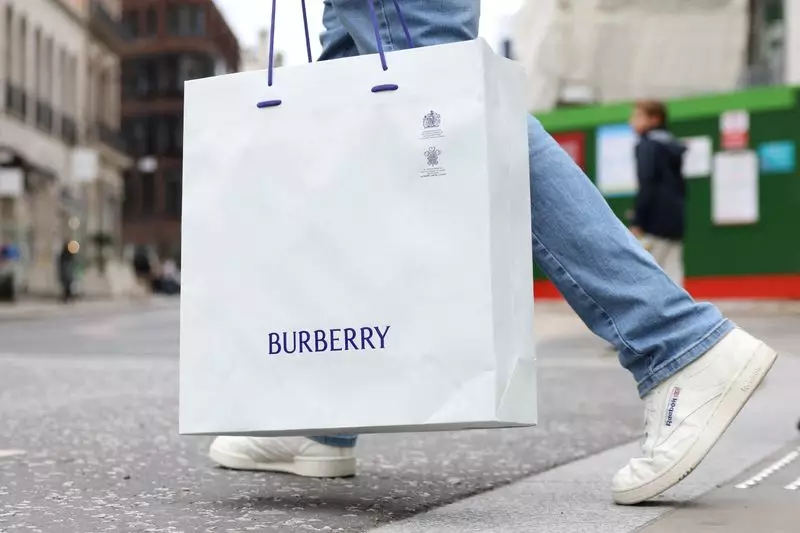In a significant update from the luxury fashion industry, Burberry has reported a less severe than anticipated drop in comparable store sales, signaling a potentially pivotal moment in its recovery trajectory. The British brand observed a 4% decline in its quarterly sales figures—an outcome notably kinder than the foreseen 12% drop. This favorable shift has been attributed primarily to an uplifting holiday season in the U.S., which has provided a beacon of hope for investors and stakeholders alike. The initial enthusiasm surrounding Burberry’s results sparked a buoyant response from the market, with its shares leaping by an impressive 12%. Ultimately, this reaction points to growing optimism regarding the rekindling of luxury consumer confidence.
At the helm of this revival is Burberry’s CEO, Joshua Schulman, who embarked on his journey with the brand just six months ago. Schulman’s leadership has marked a clear strategic pivot, with a focus on Burberry’s iconic products—most notably its trench coats and cashmere scarves. Shifting the narrative away from handbags and shoes, Schulman’s approach aims to reconnect with consumers who may have felt estranged by the brand’s recent offerings, which were more avant-garde and, at times, less recognizable. In a recent communication with journalists, Schulman expressed his satisfaction with the results, noting that the brand witnessed a noteworthy increase in new customers during December, a significant milestone given the context of the preceding two years.
Delving deeper into geographical performance, Burberry’s results were not solely confined to the U.S. The revitalized sales performance reflected resilience across various regions. For instance, in New York, Burberry witnessed a surge in sales bolstered by its newly refurbished store on 57th Street, which offers a selection of lavish outerwear. In the Americas, the sales exhibited a 4% growth, demonstrating a positive trend within the North American market. However, the Asia Pacific region saw a decrease of 9%, albeit an improvement from the staggering 28% decline recorded in previous quarters. Furthermore, the performance in Europe, the Middle East, India, and Africa (EMEIA) was less severe than anticipated, with a decrease restricted to 2%.
A Glimpse into the Fiscal Future
Burberry’s Chief Financial Officer, Kate Ferry, noted that sales boosts were attributed not only to strategic markdowns but also to encouraging full-price sales, indicating a healthy demand for its luxury products. This reframing of pricing and inventory strategies provides a well-rounded approach to navigate the complex luxury market landscape. With the critical Chinese market in mind, Ferry pointed out early signs of stabilization in consumer demand—a promising indicator for Burberry, which previously faced pressures in this crucial segment. Given that mainland China constituted roughly 20% of Burberry’s total revenue in the last fiscal year, maintaining a robust presence in this market will be essential for sustained profitability.
Prospects for Burberry appear to be on an upward trajectory, with the firm hinting at the likelihood of profit by the close of the financial year, in stark contrast to its previously reported operating loss. The upcoming fashion showcase, set to unveil the Autumn/Winter 2025 collection during London Fashion Week, will serve as a critical touchpoint to further establish Burberry’s brand evolution. Analysts remain optimistic about the turn in luxury sentiments, citing recent commendable performances by other luxury brands like Richemont and Brunello Cucinelli as further indicators that consumer appetite for high-end fashion is regaining momentum.
Burberry is navigating through a crucial phase of transformation, embodying a strategic resurgence that may set the stage for a remarkable comeback in the luxury retail sector. Through wise leadership, a renewed emphasis on brand heritage, and adaptive market strategies, Burberry is positioning itself not just to survive, but to thrive in an increasingly competitive landscape.

